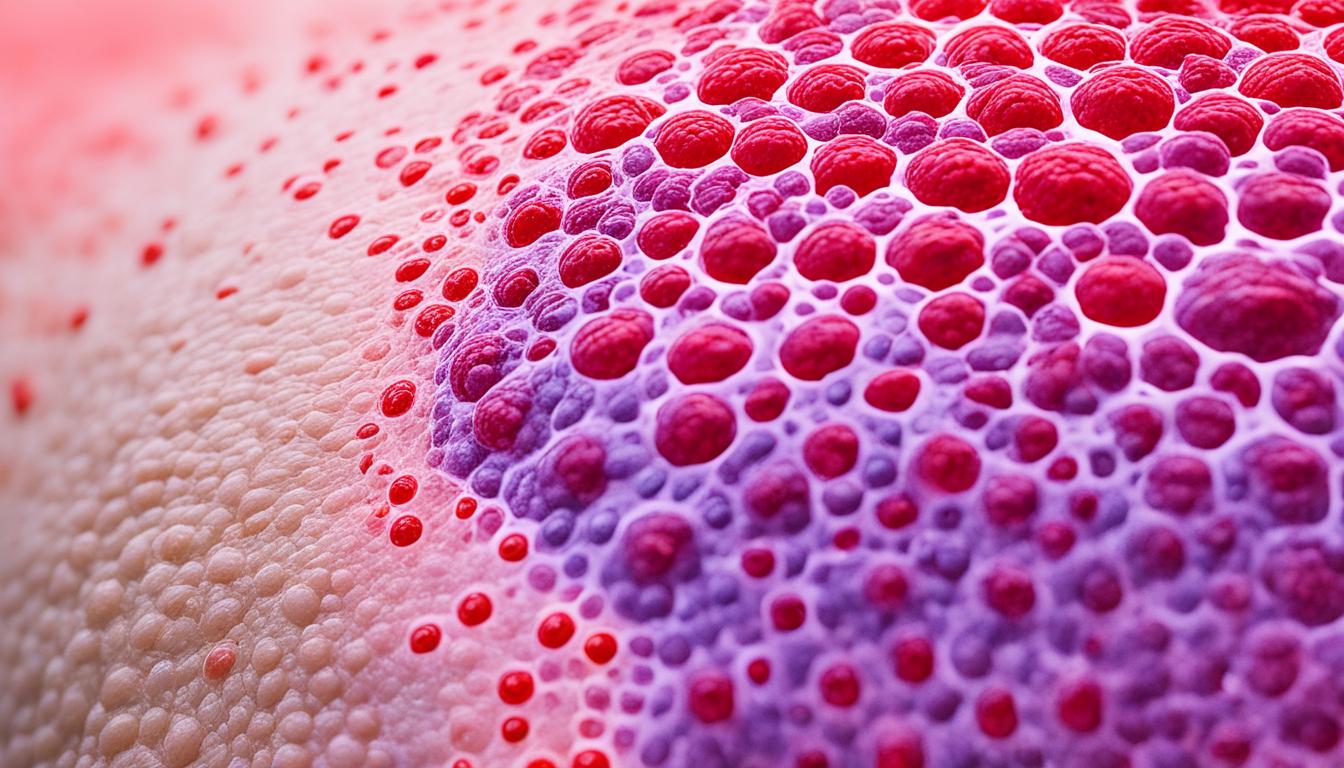A carbuncle is a staph infection causing boils to form in a group. These boils are painful, red, and swollen. They come from bacterial infections in the skin’s hair follicles. A carbuncle is actually a cluster of these that share the same pus source.
Symptoms of carbuncles and boils include:
- Red, irritated lumps under the skin
- Pain and tenderness
- Swelling
- Itching
- Bodily aches
- Fatigue
- Fever and chills
- Skin crustiness or oozing
- Appearance of pus within one day of carbuncle formation
The Staphylococcus aureus bacteria is the main cause of carbuncles. It gets into hair follicles via skin breaks. Risks for getting a carbuncle are higher with poor hygiene, diabetes, weak immune systems, and similar illnesses. External factors like skin cuts from shaving also add to the risk.
Diagnosis often happens through looking at the skin plus tests on any collected pus. To treat carbuncles, doctors might use antibiotics, painkillers, and special soaps. For large or deep carbuncles, they might need to be drained surgically. At home, applying warm compresses, keeping clean, and good hygiene can also support healing.
Key Takeaways:
- Carbuncles form from a group of boils thanks to Staphylococcus aureus bacteria.
- They show up as painful, red lumps under the skin. You might feel tired, have a fever, and see pus.
- Prevention involves strong hygiene, clean skin, and using warm compresses.
- Doctors diagnose by looking and sometimes testing pus. Treatment includes medicine and possibly surgery.
- Maintaining hygiene, keeping skin clean, and using warm compresses also help during healing.
Common Boil Locations and Additional Treatment Options
Boils, also known as skin abscesses or furuncles, can come up in many parts of the body. These are skin problems that happen when bacteria get into the skin. They are often found in areas with hair or where the skin rubs together and gets moist.
Groin Area, Buttocks, Face, and Eyelid
The groin and buttocks can have boils because of the hair, sweat, and rubbing in these spots. Boils on the face need different treatment than regular pimples. Eyelid boils are called styes, and they need special care too.
Breasts, Armpits, Shoulders, and Legs
Boils can show up on the armpits, breasts, shoulders, and legs. These spots have lots of hair and are rub against clothing, making them more likely to develop boils. It’s really important to keep these areas clean to stop boils from happening.
There are other areas where boils might show up, like the back of the neck, around the lips, pubic area, and underarm. Boils can be caused by different germs, and they can spread to other people.
Treatment Options
Many boils can be taken care of at home. Warm compresses can help the boil break open and reduce pain. It’s also key to wash with antibacterial soap and use pain relievers you can buy without a prescription.
You should see a doctor if a boil doesn’t go away, hurts a lot, or if you have a fever. Also, if you get boils near your eyes, they need special care too.
Doctors might give you medicine to kill the bacteria causing the boil. They might also need to drain it. Plus, they can show you how to keep the area clean as it heals. This can prevent more boils or other problems.
Boils can be dealt with successfully by combining home care with medical help when needed. Keeping clean and getting assistance early can reduce pain and help boils heal faster.
Preventing and Managing Boils
Proper hygiene is key in avoiding boils. Follow some hygiene tips and take care of yourself. This includes washing your hands well, especially before eating or after using the bathroom. Showering often with antibacterial soap keeps your skin clean and fights off bacteria.
Avoid touching the boils or broken skin to not make it worse. Also, wash your clothes and towels in hot water to kill any germs. If you often get boils or have skin problems, see a doctor.
Take care of yourself to stop boils. Use warm compresses to ease pain and help them drain. Wash the skin with antibacterial soap and change bandages to keep it clean. Always wash your hands after touching a boil to avoid spreading germs.
Don’t squeeze boils. Let them drain on their own to prevent scars. Clean the area and put on antibiotic ointment to help it heal and avoid scarring. Good hygiene, self-care, and early treatment help stop boils from coming back.

